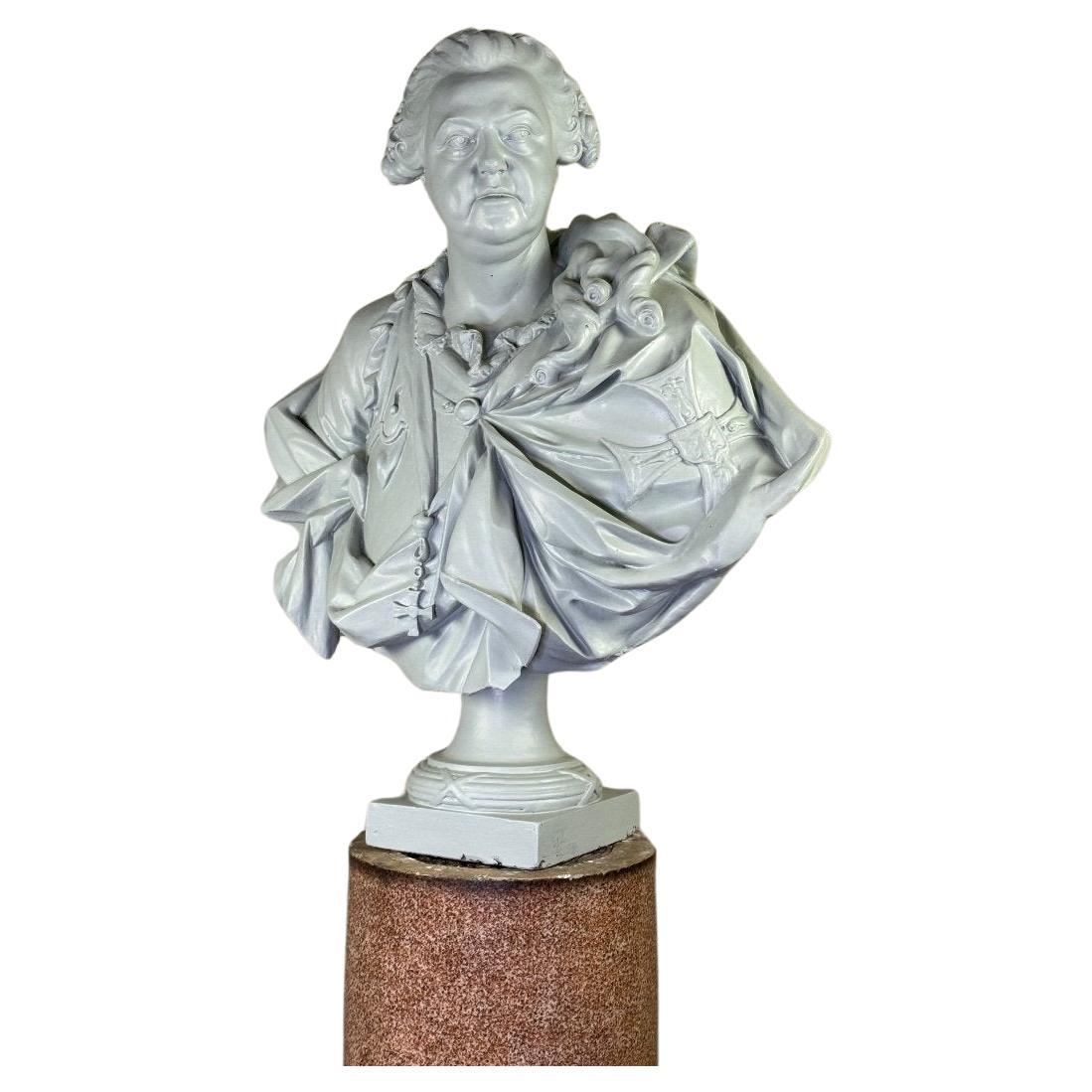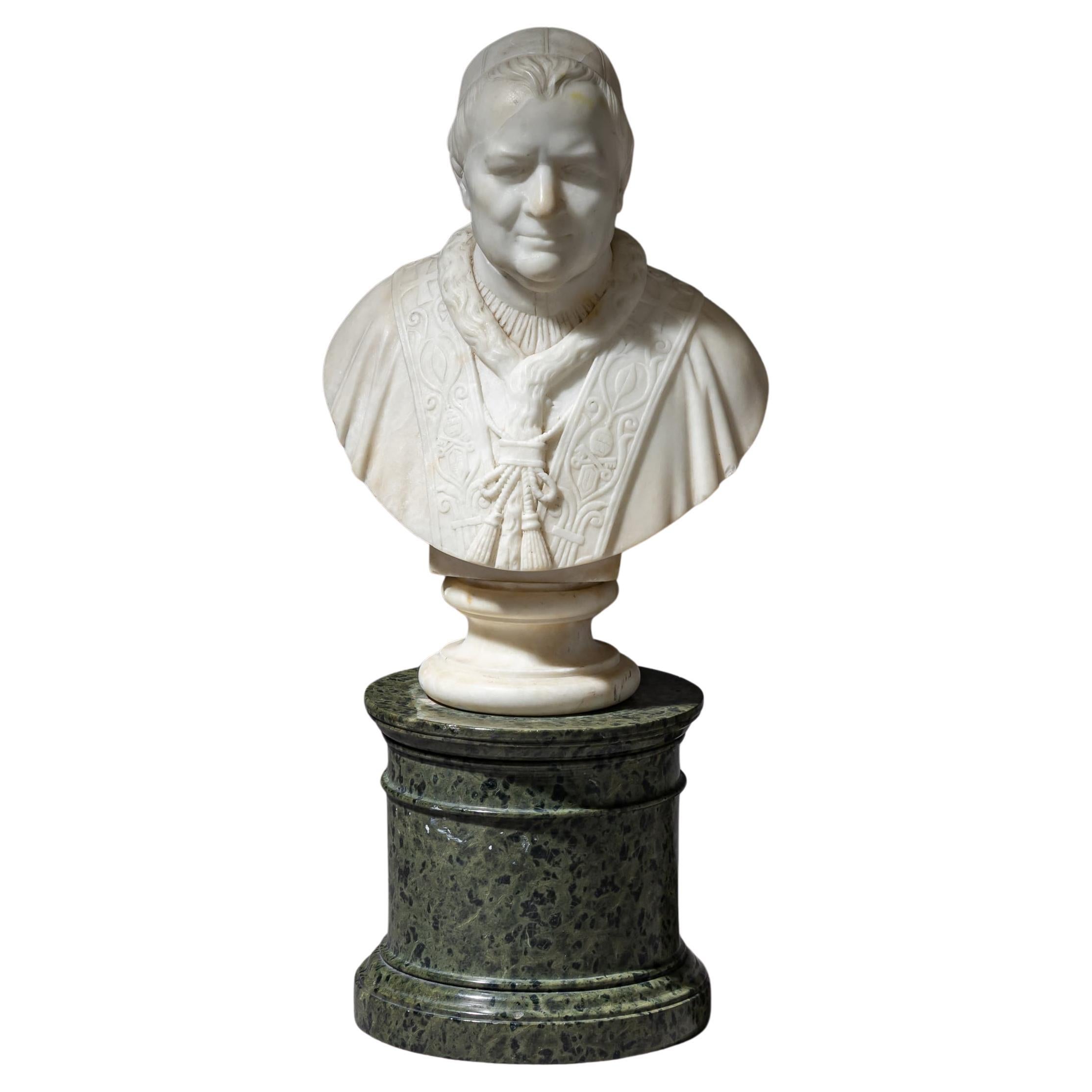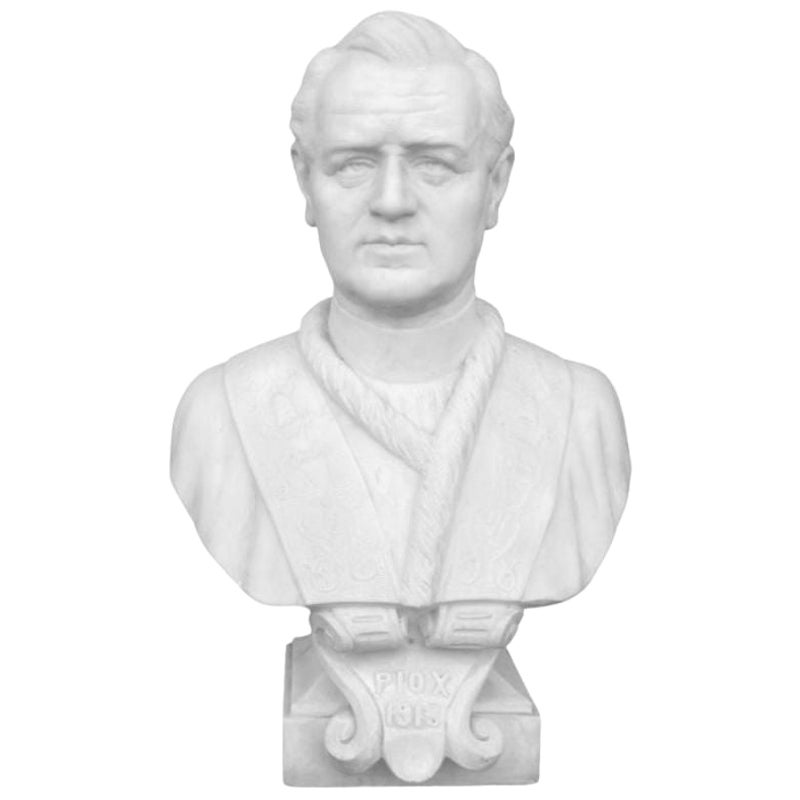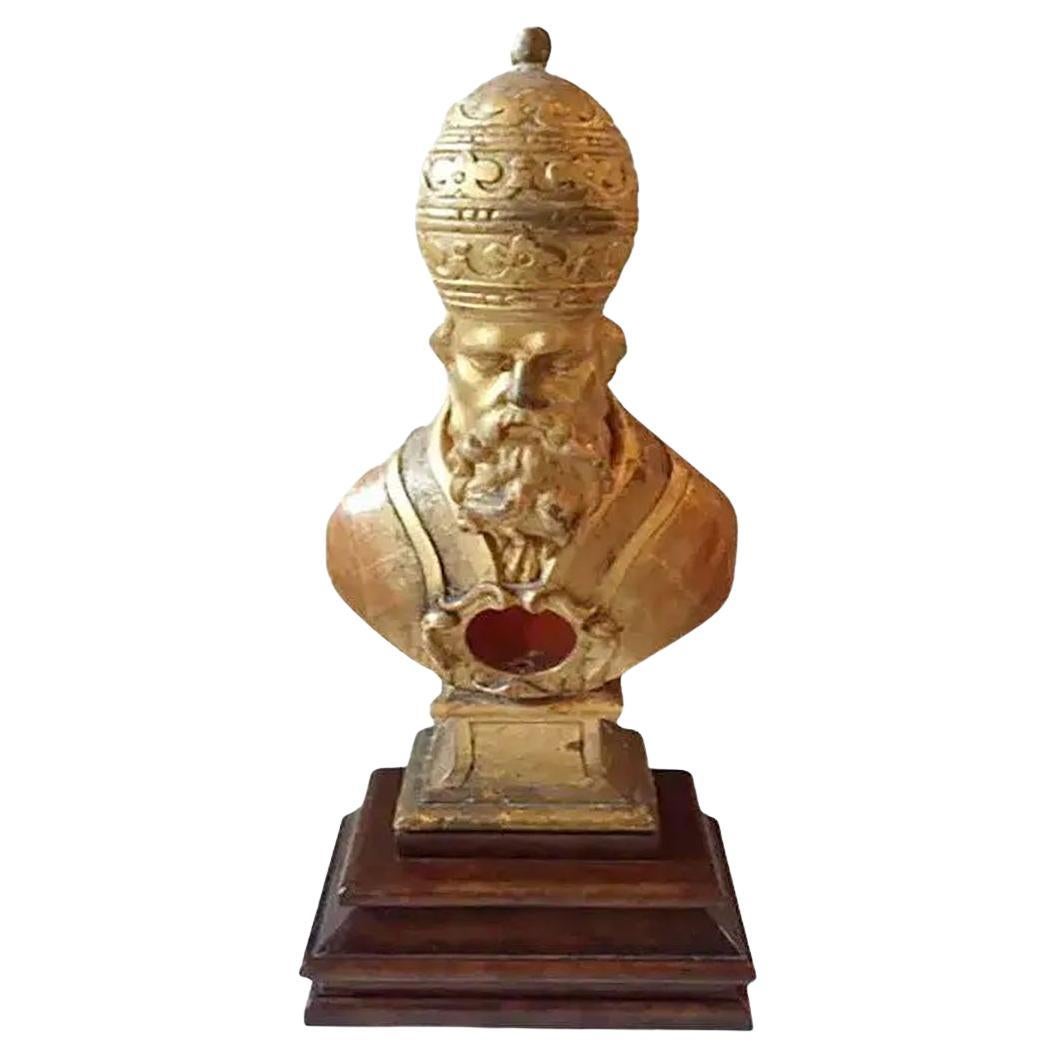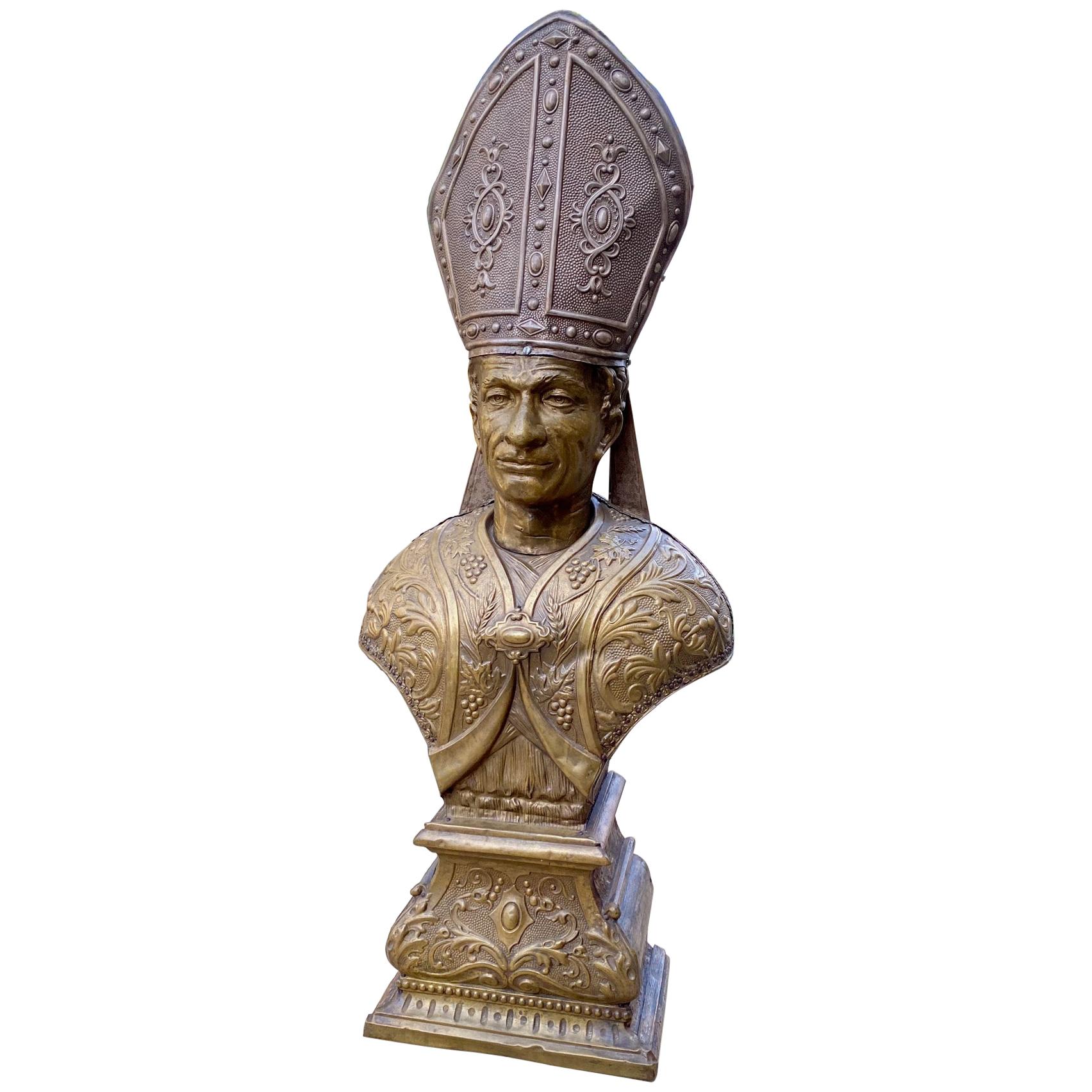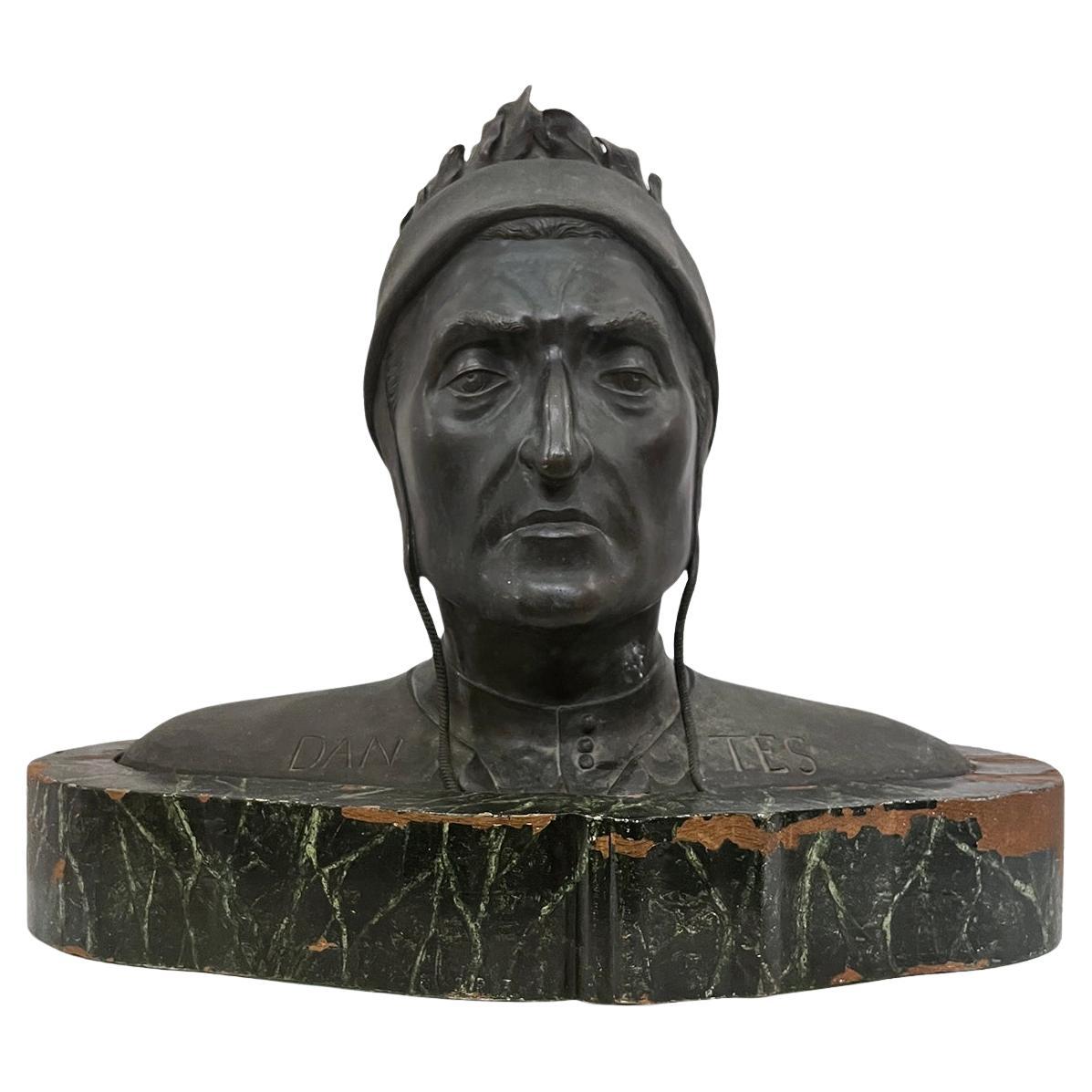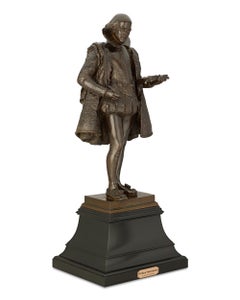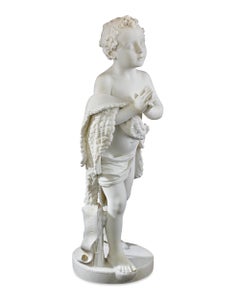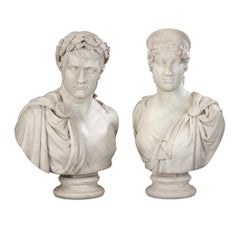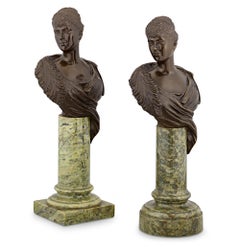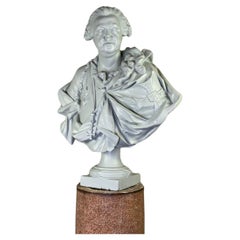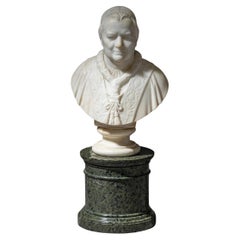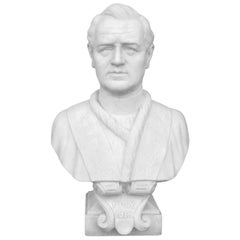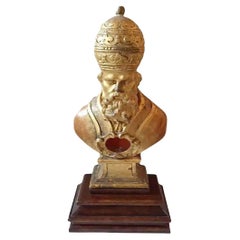Items Similar to Bust of Pope Innocent XI Odescalchi by Domenico Guidi
Want more images or videos?
Request additional images or videos from the seller
1 of 10
Domenico GuidiBust of Pope Innocent XI Odescalchi by Domenico GuidiCirca 1690
Circa 1690
$298,500
£227,741.12
€260,435.42
CA$420,650.27
A$458,674.01
CHF 243,413.72
MX$5,545,220.46
NOK 3,080,577.22
SEK 2,823,777.48
DKK 1,945,184.23
About the Item
This monumental bust is a museum-quality example of Roman Baroque sculpture. Crafted by the legendary Domenico Guidi and carved from Carrara marble, the impressive portrait captures the visage of Pope Innocent XI, Benedetto Odescalchi (1611-1689). It presents a larger-than-life example of Guidi’s remarkable skill as a sculptor, which ultimately made his workshop one of the most important in Rome during his age. Today, his works are rarely found on the market, particularly his extraordinary works in marble.
Pope Innocent XI was born Benedetto Odescalchi into an Italian noble family of prominent bankers. Spending his early years in banking, he eventually turned to the law, earning his doctorate in 1639. His background would serve him well in his service to the papacy, and he became known as a frugal and devout member of the Church. In 1676, he was unanimously elected Pop after the death of Clement X. During his nearly 13-year reign, he instilled his own personal ideals of austerity and frugality onto the Church, with a deep commitment to reform and piety.
He is captured here by Guidi in his traditional Pope’s mozzetta and camauro cap. A wide stole is draped over his shoulders, ornamented by acanthus leaves and the coat of arms of the Odescalchi family. It displays Guidi’s mastery over the chiaroscuro effect, particularly in the high level of contrast in his cheeks and his eyes, which Guidi achieved through various methods of high polish.
A very similar portrait sculpture of Pope Innocent XI by Guidi can be found in the collection of the Royal Castle in Warsaw. The Warsaw bust belongs to a series of portraits of popes which the Odescalchi family commissioned from Domenico Guidi in the 1690s. Compared to that example, the present bust is far more dramatic, with deeper cut lines and a more precise expression. It is likely that the present piece was seen by the Odescalchi family, who ordered a similar one to be made. The piece was almost certainly intended to be displayed in a niche, given its dramatic cutting and its roughly carved back.
Others of Guidi’s busts can be found in important collections throughout Italy, England and the United States, though many of these are lesser bronze repetitions. A bronze bust of the Pope Alexander VIII by Guidi is currently in the collection of the Victoria & Albert Museum (London), while a terracotta version of the same is in the Los Angeles County Museum. A bronze of Pope Alexander VIII can be found in the Princely Collection of Lichtenstein, and his impressive marble papal bust of Clement IX graces the pope’s tomb in Santa Maria Maggiore. The present bust of Pope Innocent XI stands among these impressive examples as a truly museum-quality work by this Baroque master. That ours is also a marble original makes it all the more exceptional.
Domenico Guidi was the nephew of the prominent sculptor Giuliano Finella, and in 1639, he joined his uncle in Naples in order to learn the family business. His first task was a monumental one – he assisted Finella on thirteen statues of saints for the Cathedral in Naples. It was well known that his uncle had an ongoing feud with the great Baroque sculptor Bernini, and thus Guidi never entered his workshop. Instead, he went to Rome to work for Bernini’s main rival Alessandro Algardi in 1648 and, after the master’s death in 1654, began his own independent career. His workshop quickly became one of the most popular in Rome, particularly following the death of Bernini, and he also enjoyed remarkable success in France. Today, his sculptures stand as remarkable examples of the Roman Baroque style.
Circa 1690
46” high x 35” wide x 17” deep
- Creator:Domenico Guidi (1625 - 1701)
- Creation Year:Circa 1690
- Dimensions:Height: 46 in (116.84 cm)Width: 35 in (88.9 cm)Depth: 17 in (43.18 cm)
- Medium:
- Movement & Style:
- Period:
- Condition:
- Gallery Location:New Orleans, LA
- Reference Number:Seller: 30-77811stDibs: LU1866601982
About the Seller
5.0
Vetted Professional Seller
Every seller passes strict standards for authenticity and reliability
Established in 1912
1stDibs seller since 2013
20 sales on 1stDibs
Typical response time: 2 hours
- ShippingRetrieving quote...Shipping from: New Orleans, LA
- Return Policy
More From This Seller
View AllPatinated Bronze Statuette of William Shakespeare
By Frederick William MacMonnies
Located in New Orleans, LA
Frederick William MacMonnies
1863–1937 American
William Shakespeare
Signed "F. MacMonnies" and foundry-marked "E. Gruet Jeune, Fondeur, Paris"
Bronze
Frederick William MacMonnies...
Category
19th Century Academic Figurative Sculptures
Materials
Bronze
Young St. John the Baptist by Domenico Menconi
Located in New Orleans, LA
Masterfully carved with remarkable detail, a youthful Saint John the Baptist folds his hands in prayer in this stunning marble by the important Italian sculptor Domenico Menconi. The...
Category
19th Century Academic Figurative Sculptures
Materials
Marble
Pair of Carrara Marble Busts of the Emperor Napoleon and Empress Marie Louise
Located in New Orleans, LA
"I am a true Roman Emperor; I am of the best race of the Caesars—those who are founders." –Napoleon Bonaparte, 1812
Among the most iconic and celebrated figures in history, Napoleon...
Category
19th Century Figurative Sculptures
Materials
Marble
Pair of Bronze Busts of Queen Mary by William Henry Tyler
Located in New Orleans, LA
Pair of Bronze Busts of Queen Mary when Duchess of York
William Henry Tyler
Dated 1893
These rare and highly important bronze busts of the future Queen Mary, created in 1893 by the ...
Category
19th Century Figurative Sculptures
Materials
Marble, Bronze
Perseus
Located in New Orleans, LA
The legendary Greek god Perseus is the subject of this elegant half-bust by Ubaldo Gandolfi, a major painter and sculptor from Bologna. The son of Zeus and Danaë, Perseus was the le...
Category
Mid-18th Century Other Art Style Figurative Sculptures
Materials
Terracotta
THE LAST DAYS OF NAPOLÉON BY
Located in New Orleans, LA
This highly evocative bronze by Vincenzo Vela captures the deposed Emperor Napoléon on his deathbed, holding a map of Europe and lost in thought about what might have been. Remarkable among most portrayals of the exiled leader, this highly detailed sculpture depicts Napoléon at his most vulnerable. Nonetheless, Vela perfectly captures his still-heroic bearing, which imparts to this work a monumental quality and quiet dignity. The mate to this figure is the colossal marble at the Musée du Château de Malmaison, which was shown at the Paris Salon of 1867.
The founder of the verismo movement in Italy, Vela was one of the great exponents of realism in sculpture. Born in Ligornetto, Switzerland in 1820, he studied under celebrated sculptor, Benedetto Cacciatori. He was also influenced both by the work of Tuscan sculptor Lorenzo Bartolini, who seamlessly combined neoclassicism with naturalism and the romantic painting of Francesco Hayez...
Category
19th Century Realist Figurative Sculptures
Materials
Marble, Bronze
You May Also Like
Bust Of Governor-general Alexandre De Lorraine
Located in Honnelles, WHT
Bust of Governor-General Alexandre de Lorraine, plaster after Jean Philippe Augustin Ollivier, known as Ollivier de Marseille
Category
20th Century European Louis XV Busts
Materials
Plaster
Marble Bust of Pope Pius IX on a Serpentine Base, Rome, circa 1846/47
Located in Greding, DE
Official marble bust of Pope Pius IX (1792–1878), created in Rome around 1846/47, shortly after his election as the 255th pope on June 16, 1846. The bust depicts him at approximately...
Category
Antique 1840s Italian Biedermeier Busts
Materials
Marble
Marble Bust of Pope Pi X Early 20th Century by J. Verona
Located in Marseille, FR
Marble bust of Pope Pi x early 20th century, height 60 cm width 38 cm depth 28 cm. Signature J. Verona.
Additional information:
Material: Marble & ony...
Category
20th Century Busts
Materials
Marble
Carved Italian Pope With Original Gilding
Located in Dallas, TX
Large carved wood and with original gilding of Pope Gregory with a mitre shaped like a crown. Circa 1820, Italian.
The wood surround, 18th century Rocco highly carved with leaves is...
Category
Antique 1820s Italian Busts
Materials
Wood
Bust Pope Gilt Metal Bust on Hand Carved Wood Base Sculpture Antique Dealer LA
Located in West Hollywood, CA
Bust Pope Gilt Metal Bust on Hand Carved Wood Base Sculpture Antique Dealer LA . An amazing 19th Century bust depicting figure of Pope of Rome Leo XIII compo...
Category
Antique Late 19th Century European Busts
Materials
Metal
$6,160 Sale Price
20% Off
Antique Bust of Dante Alighieri
Located in New York, NY
A late 19th Century Italian bronze bust of the poet Dante.
Measurements:
Length: 19.5"
Depth: 10"
Height: 15.5"
Category
Antique Late 19th Century Italian Busts
Materials
Bronze
More Ways To Browse
Antique Sculpture Stand
Saints Statue
Baroque Marble Sculpture
Antique Saint Statues
Pope Bust
Venice The Grand Canal And Rialto Bridge
Vermouth Poster
Vietnam War Poster
Village People Painting
Vintage Apple Logo
Vintage Bermuda Poster
Vintage Block Calendar
Vintage Camping Tents
Vintage Cancan Dancer
Vintage Fishing Trawler
Vintage Hockey Skates
Vintage Pony Express
Vintage Soccer Posters
